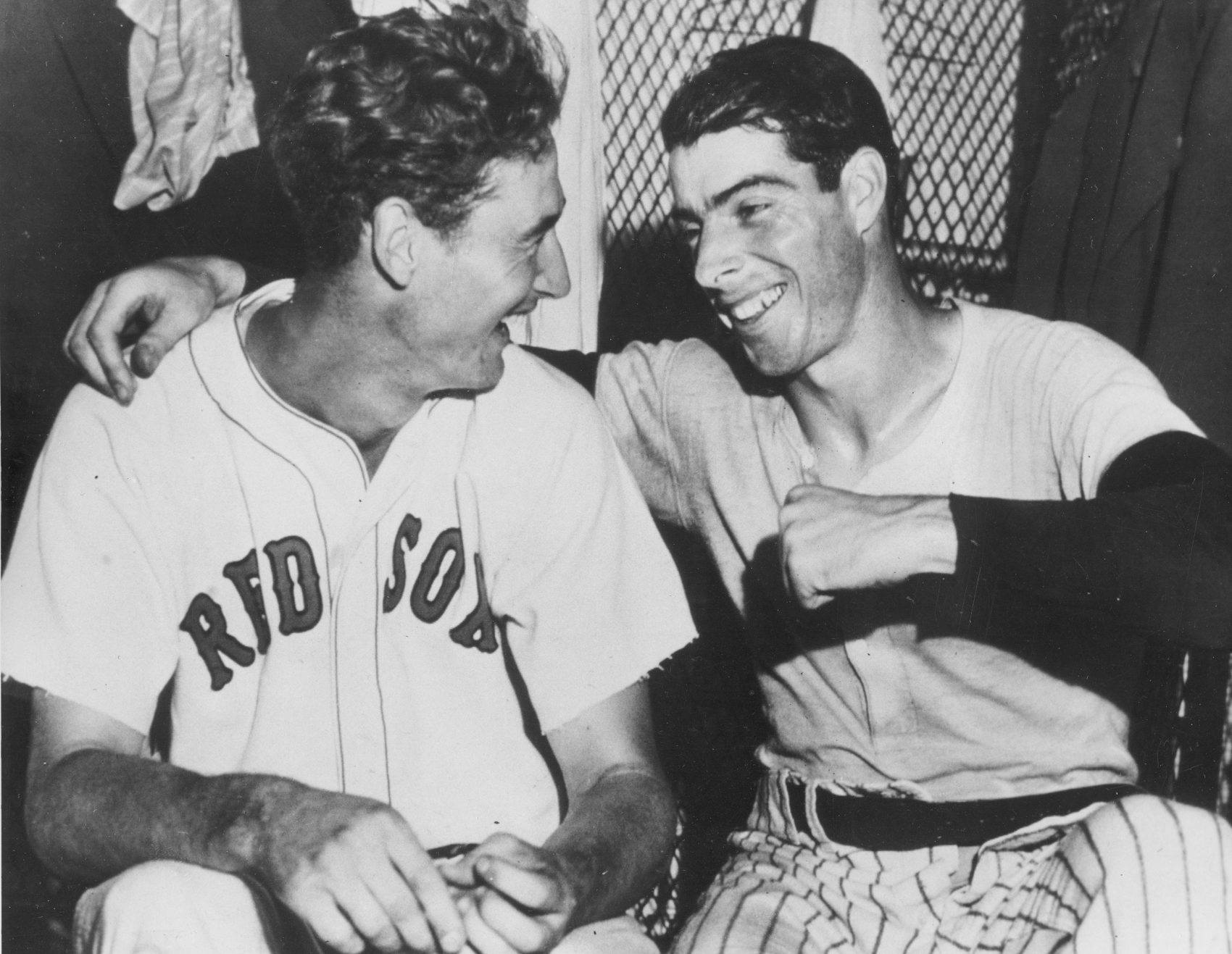Welp, here I am again, going down another JoePos rabbit hole...
Today's baseball-in-the-time -of-COVID essay details the inexplicable way in which Ted Williams managed to win his second Triple Crown in 1947 but lose the MVP by one point to Joe DiMaggio. Posnanski attributes it to the fact that the Yankees won their division by a dozen games and the writers did not often vote for players who were not on pennant winners or at least serious contenders in those days, not for first place in the MVP running, anyway.
He blames, perhaps rightly, the three first-place votes for the resurgent firstbaseman, George McQuinn, who had been released by the Philadelphia Athletics a year before but hit over .300 for the Yankees as they won the AL pennant running away. McQuinn was out of MLB a year later after hitting just .248, but in the mean time it looked an awful lot like McQuinn was the reason they won.
Personally, I thought the seven first place votes given to Yankees super-reliever Joe Page had more to do with it than that, but in any case, The Kid Lost and the Yankee Clipper won, and that was that.
However, this McQuinn "correlation = causality" argument reminds me of the 2003 AL MVP vote. Shannon Stewart got traded to the Twins for Bobby Kielty and a PTBNL at the All Star break. They were 44-49 at the time, but they went 46-23 in the second half, the best record in baseball. Stewart hit .322 with 6 homers and 38 RBI (2.6 bWAR), which made it seem like Stewart was the reason they were winning.
In reality, the team as a whole hit almost exactly as well in the second half (779 OPS) as they had in the first (768), even though Stewart himself was markedly better than the guy he largely replaced in the lineup, Bobby Kielty, had been. The lineup did average almost 5.4 runs per game after the break, compared to 4.6 before, but that must have been due to the timeliness of their hitting more than its overall quality.
In fact it was the pitching staff that got its act together in the second half, pitching to a 3.96 ERA, compared to the 4.74 they had racked up before the break. In particular Brad Radke and Kenny Rogers both pitched notably better, and Johan Santana just pitched more, as the Twins finally realized tat he should be starting every 5th day.
At around the same time, the White Sox traded for Carl Everett, another outfielder who really picked up his game after being traded. He hit .301 with 10 homers and 41 RBIs (2.0 bWAR) for the Pale Hose, and Chicago went 41-27 in the second half, after playing 5 games under .500 in the first half. Simultaneously, the first-place, 51-41 Royals (!) went back in the tank for the second half (32-38) and fell to third.
And for what it's worth, at around the same time the Blue Jays, who had traded Stewart away, also played better in the second half. Using the same logic, then, this would suggest that Stewart's absence was the reason the Jays started winning, which is only slightly more silly a suggestion than the previous one.
In any case, Everett didn't get a single MVP vote of any kind (nor, for that matter, did Bobby Kielty), while Stewart got three first place votes and finished 4th overall! So, what gives?
Well, there were two things at play here:
- The Twins ended up winning their division by four games over the White Sox. In particular, they went 5-2 against Chicago in September, in the heat of the pennant race, including a three-game sweep at home that was part of an 11-game winning streak which effectively put the last nail in the coffin for the ChiSox. They went from two games behind Chicago on September 9th, after losing to the White Sox twice in a row, to 3.5 games up on Chicago on September 18th, after that sweep. So the optics were there, the Twins literally overtaking the White Sox down the stretch, even if Stewart himself didn't especially do anything remarkable in those particular games or in the pennant drive in particular (he hit .289 with zero homers in September).
- Jayson Stark, senior baseball writer on ESPN.com and regular contributor to ESPN's various online and cable TV products, such as SportsCenter and Mike & Mike in the Morning, was lobbying hard for Stewart to get the MVP.
Admittedly, others made this argument as well (Mark Sheldon from MLB.com, Jim Souhan of the Minneapolis Star-Tribune, who may have had a bit of a home bias) but none with as large an audience or as much clout in the world of baseball journalism as Stark. Stark has made something of a career of finding interesting looking numbers in baseball and writing about them, but of course just because they're interesting - or more to the point, just because they correlate with winning - does not necessarily mean they're meaningful or causal.
My favorite, which I learned about in Psychology I as a freshman at Lehigh, is the Superbowl indicator. From 1967-1997, the conference that won the SuperBowl correlated at 90% with the way the Dow Jones finished, though there is really no good causal explanation for this. My psych professor used it to remind us that correlation never implies causality, an expression he repeated so often that I can still hear his voice in my head as I type it out, now almost 27 years later.
Likewise, there is no more reason to believe that McQuinn deserved all the credit for the success of the 1947 Yankees than that Stewart deserved it for the 1997 Twins. Or that the Superbowl conference winner deserves credit for the stock market finishing up (or down). But it's an easy case to make, and harder to disprove when the optics seem to support it.
In 1947, nobody had the kind of audience that Stark did in 2003, but writers like Dick Young or Jimmy Cannon probably had wider readership than just about anybody else out there, writing for the New York papers, and may have advocated for McQuinn's votes with their fellow writers as well as their readers.
We'll probably never know, exactly. But it's interesting to consider how these decisions may have been made. None of them occurs in a vacuum, and the modern day decision makers (if indeed 2003 can even be considered "modern day" anymore) are not immune to the same kinds of flawed lines of logic.








No comments:
Post a Comment